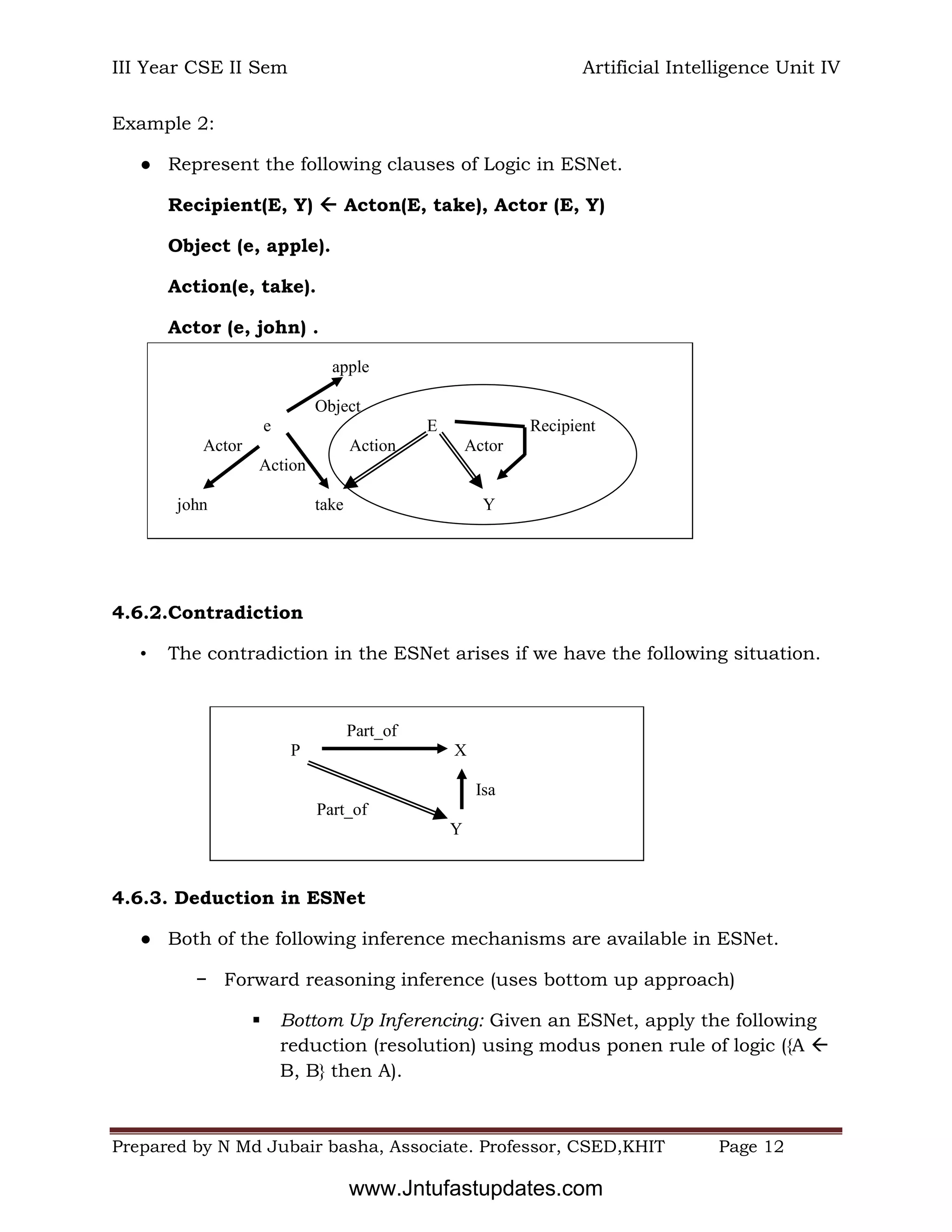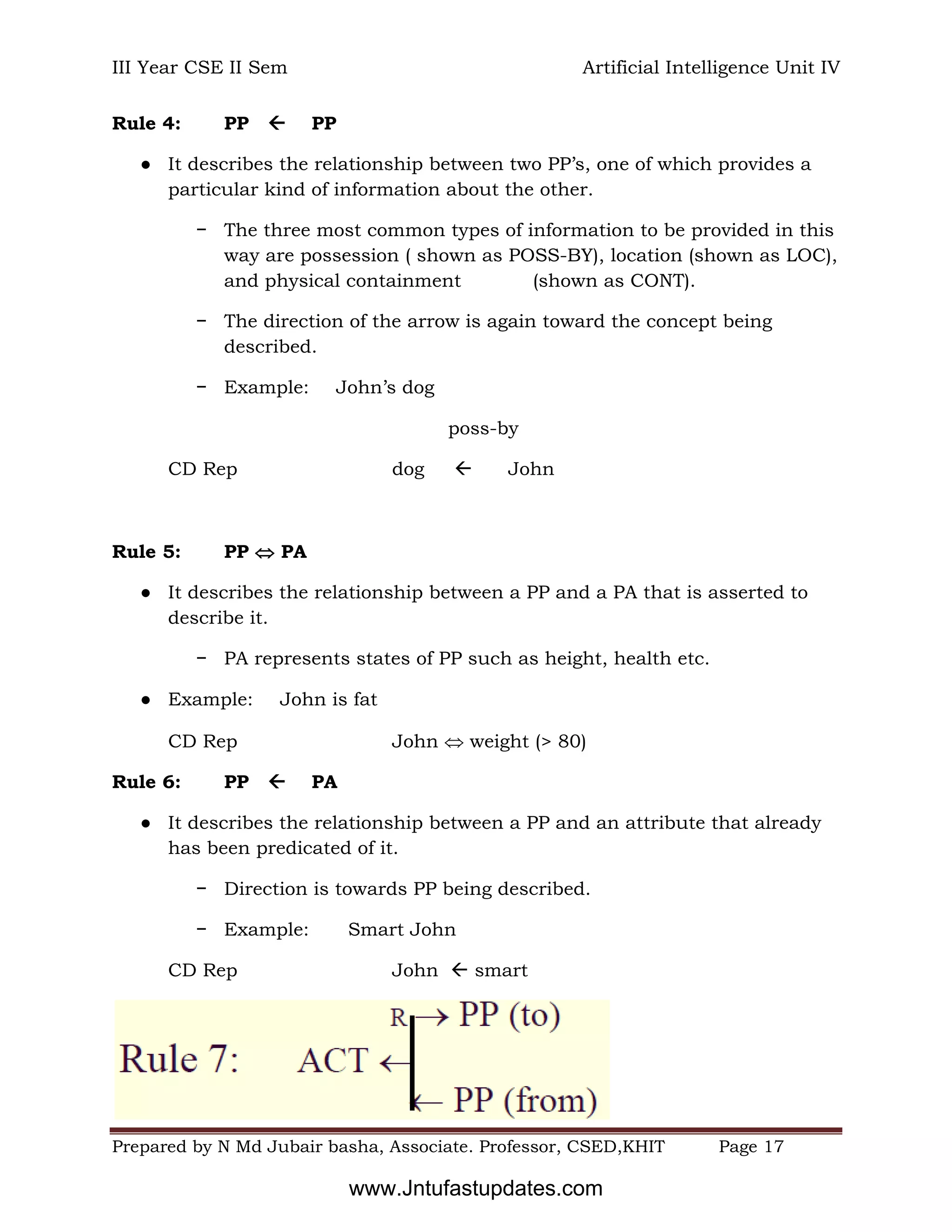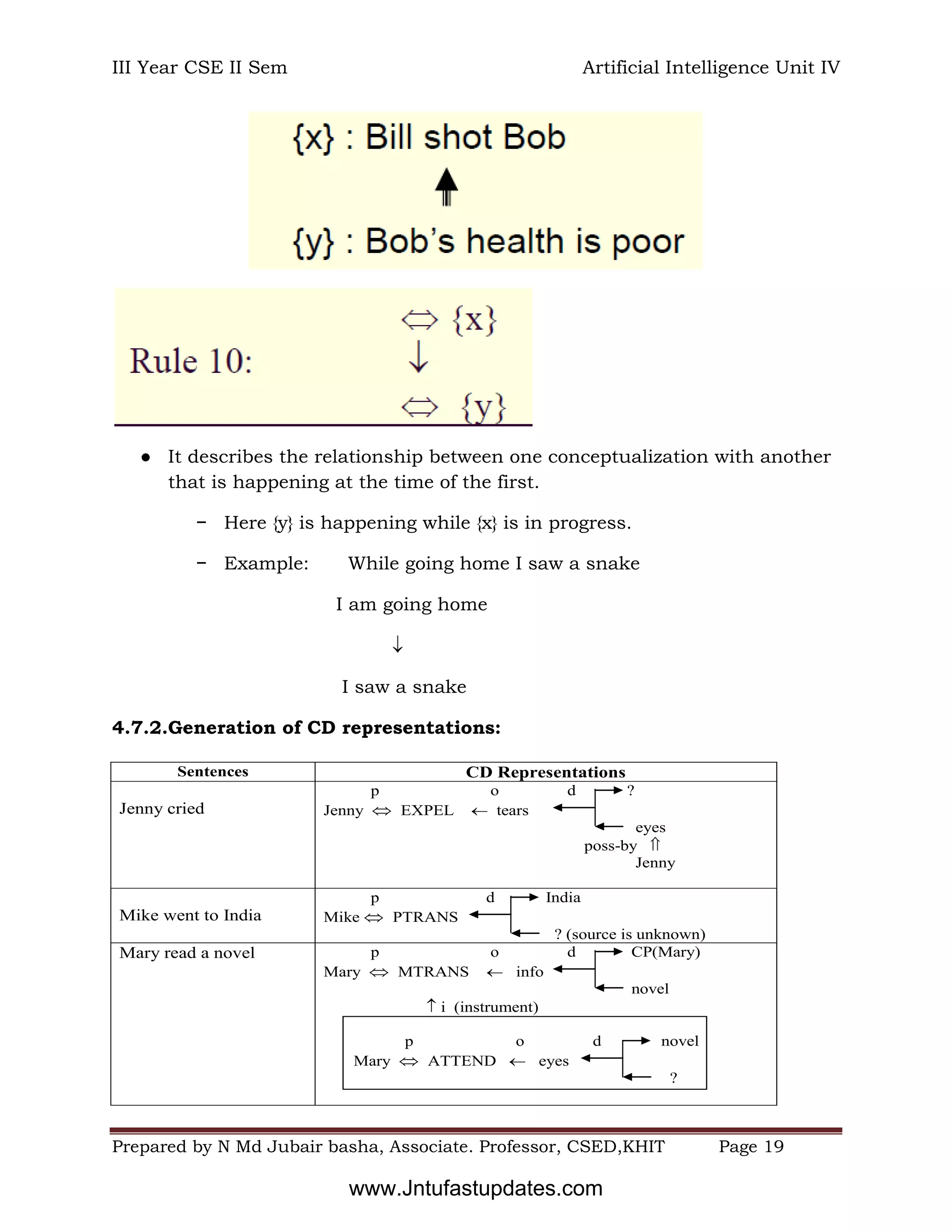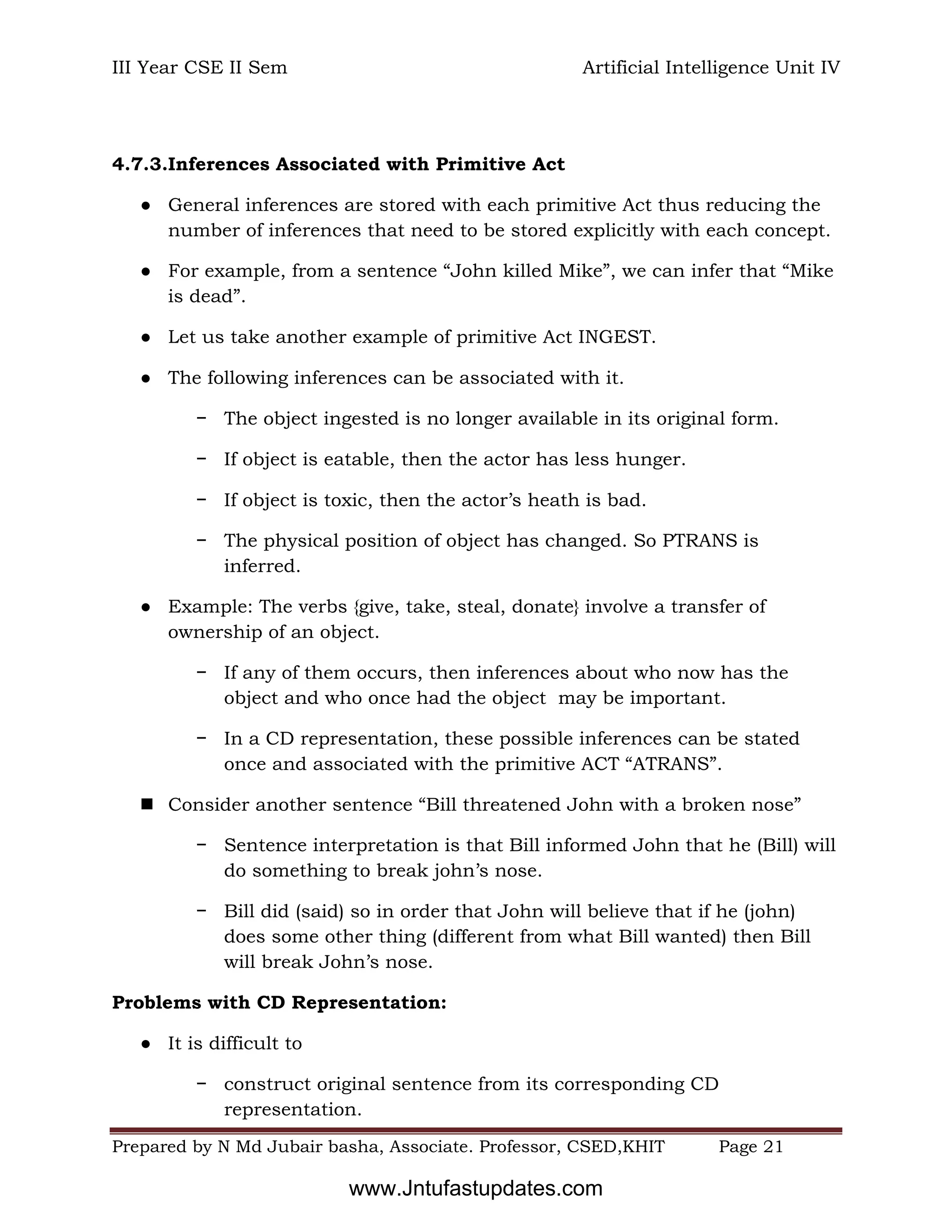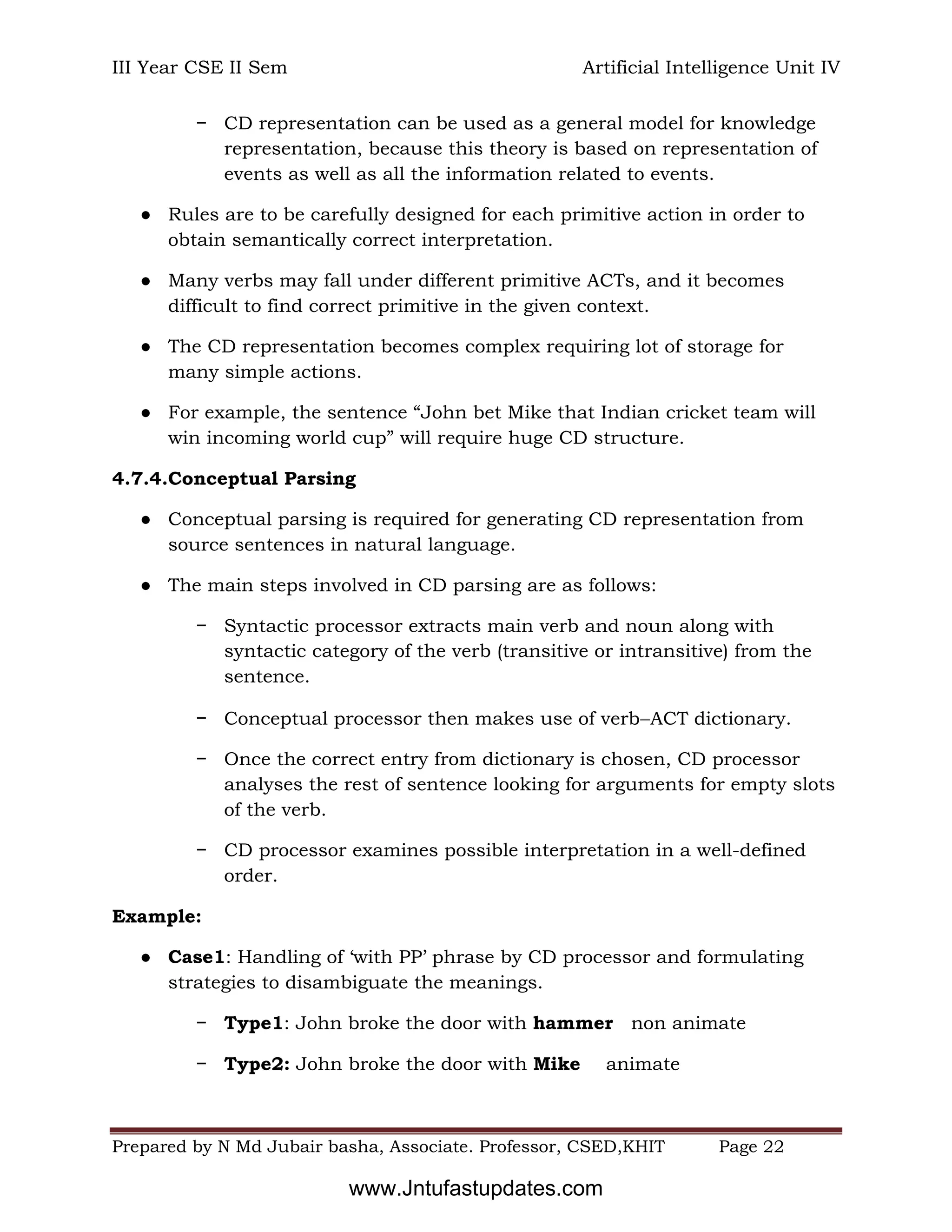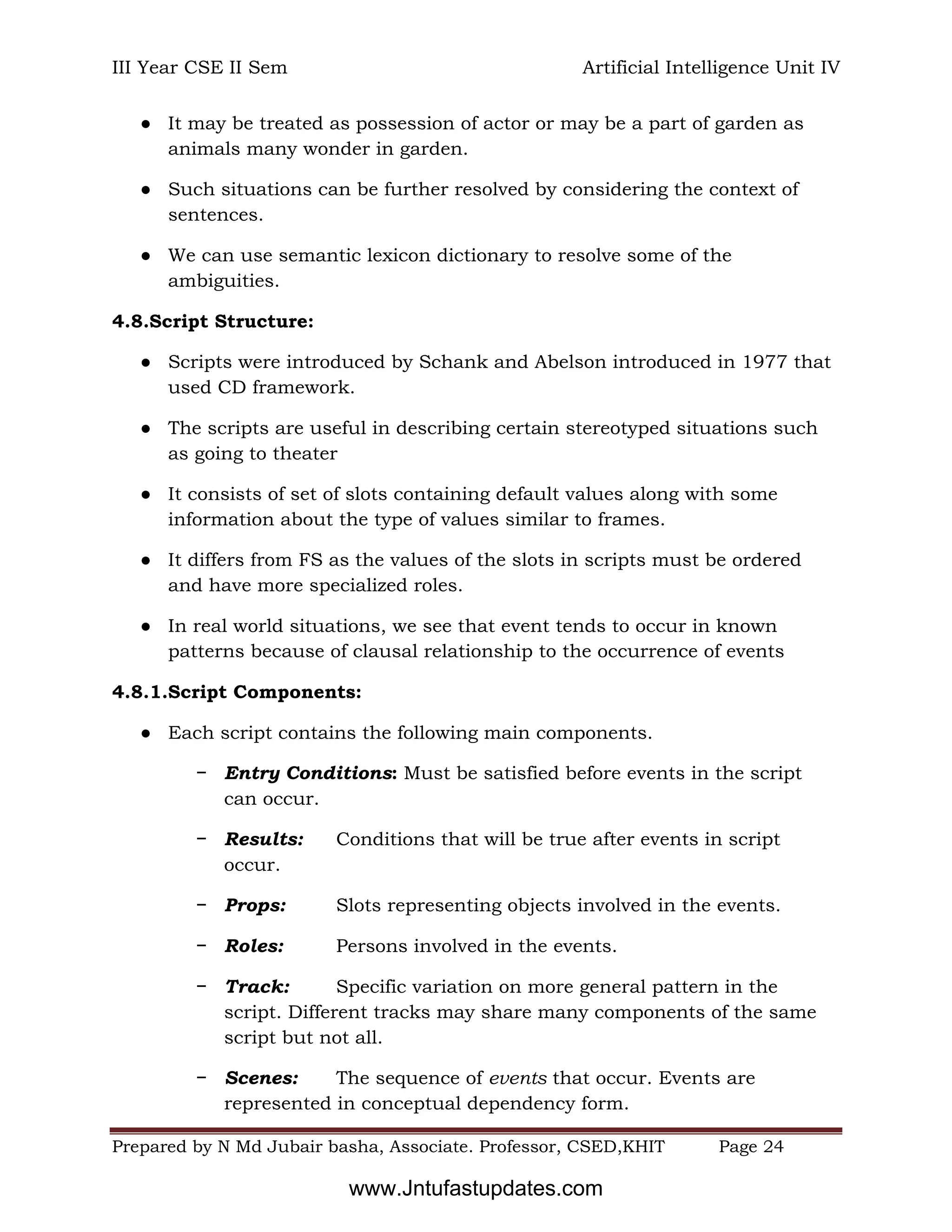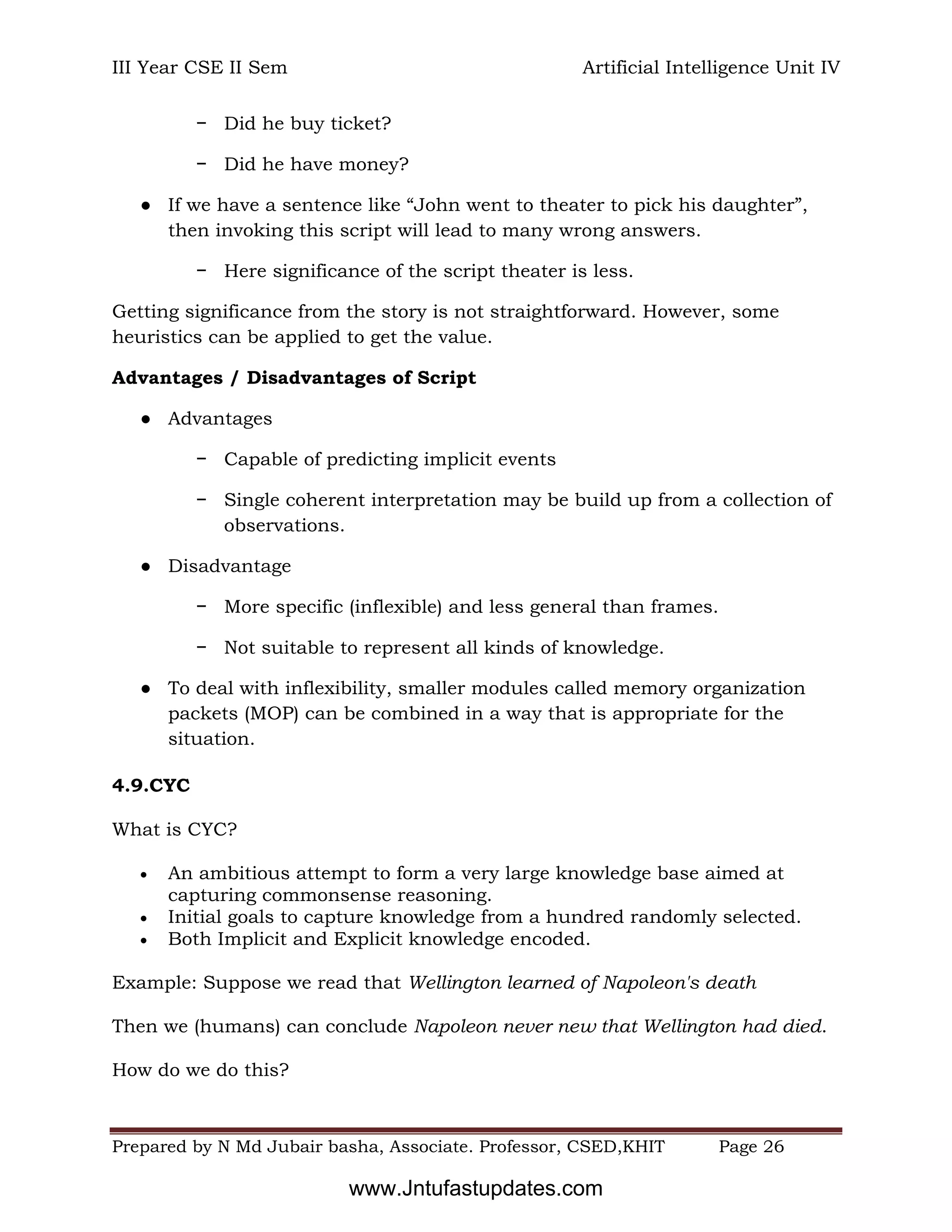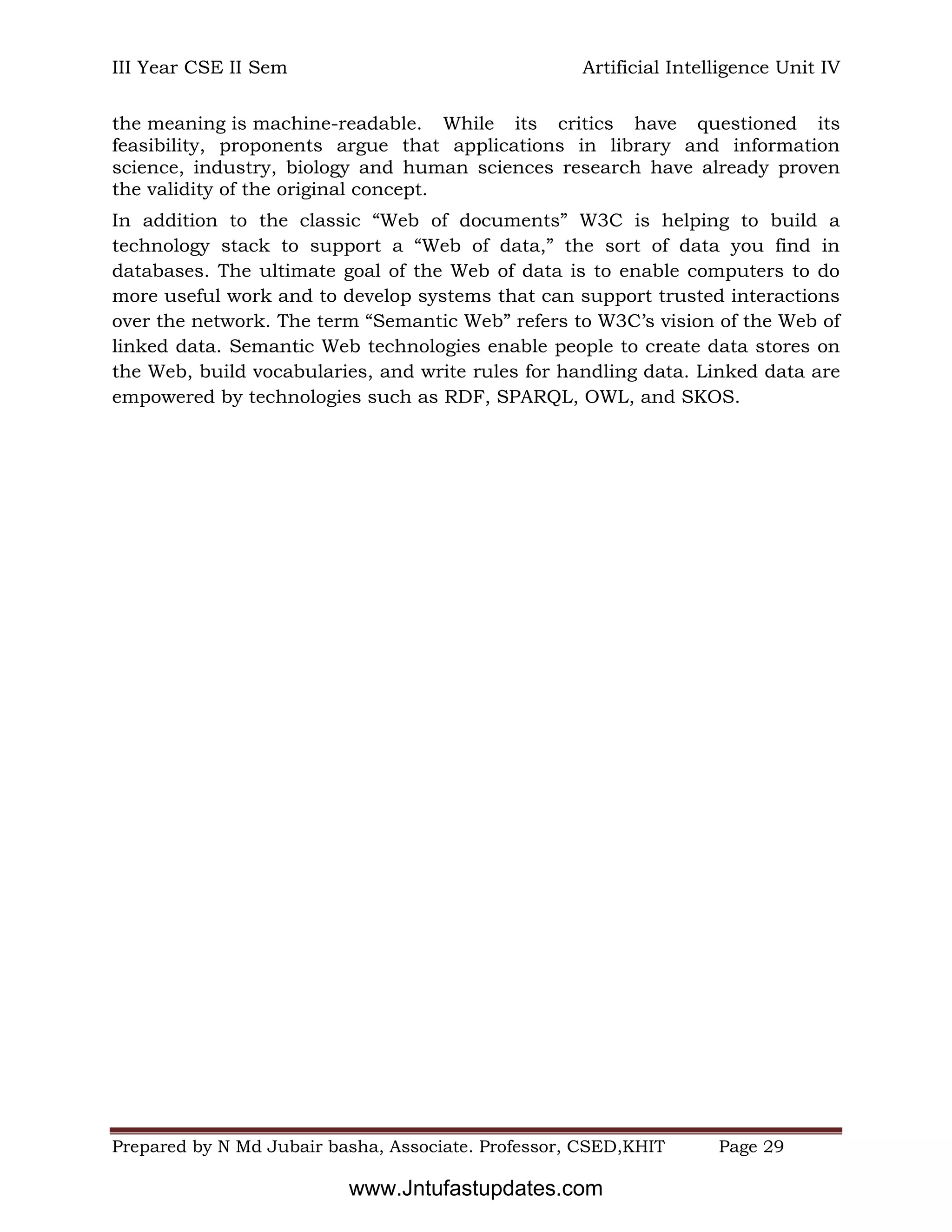This document discusses knowledge representation techniques in artificial intelligence, including semantic networks, frames, and extended semantic networks. It provides examples of representing knowledge about various concepts such as animals, birds, and humans using predicates, semantic networks, and frames. Inheritance and deduction techniques are also described for semantic networks and extended semantic networks.

![III Year CSE II Sem Artificial Intelligence Unit IV
Prepared by N Md Jubair basha, Associate. Professor, CSED,KHIT Page 2
The commonly used links in semantic net are of the following types.
− isa subclass of entity (e.g., child hospital is subclass of
hospital)
− inst particular instance of a class (e.g., India is an instance of
country)
prop property link (e.g., property of dog is ‘bark)
4.3. Representation of Knowledge in Sem Net
“Every human, animal and bird is living thing who breathe and eat. All birds
can fly. All man and woman are humans who have two legs. Cat is an animal
and has a fur. All animals have skin and can move. Giraffe is an animal who is
tall and has long legs. Parrot is a bird and is green in color”.
4.3.1Representation in Predicate Logic
● Every human, animal and bird is living thing who breathe and eat.
X [human(X) living(X)]
X [animal(X) living(X)]
X [bird(X) living(X)]
● All birds are animal and can fly.
X [bird(X) canfly(X)]
● Every man and woman are humans who have two legs.
X [man(X) haslegs(X)]
X [woman(X) haslegs(X)]
X [human(X) has(X, legs)]
● Cat is an animal and has a fur.
animal(cat) has(cat, fur)
● All animals have skin and can move.
X [animal(X) has(X, skin) canmove(X)]
www.Jntufastupdates.com](https://image.slidesharecdn.com/air16-unit-4-230914081906-023f3011/75/AI-R16-UNIT-4-pdf-2-2048.jpg)


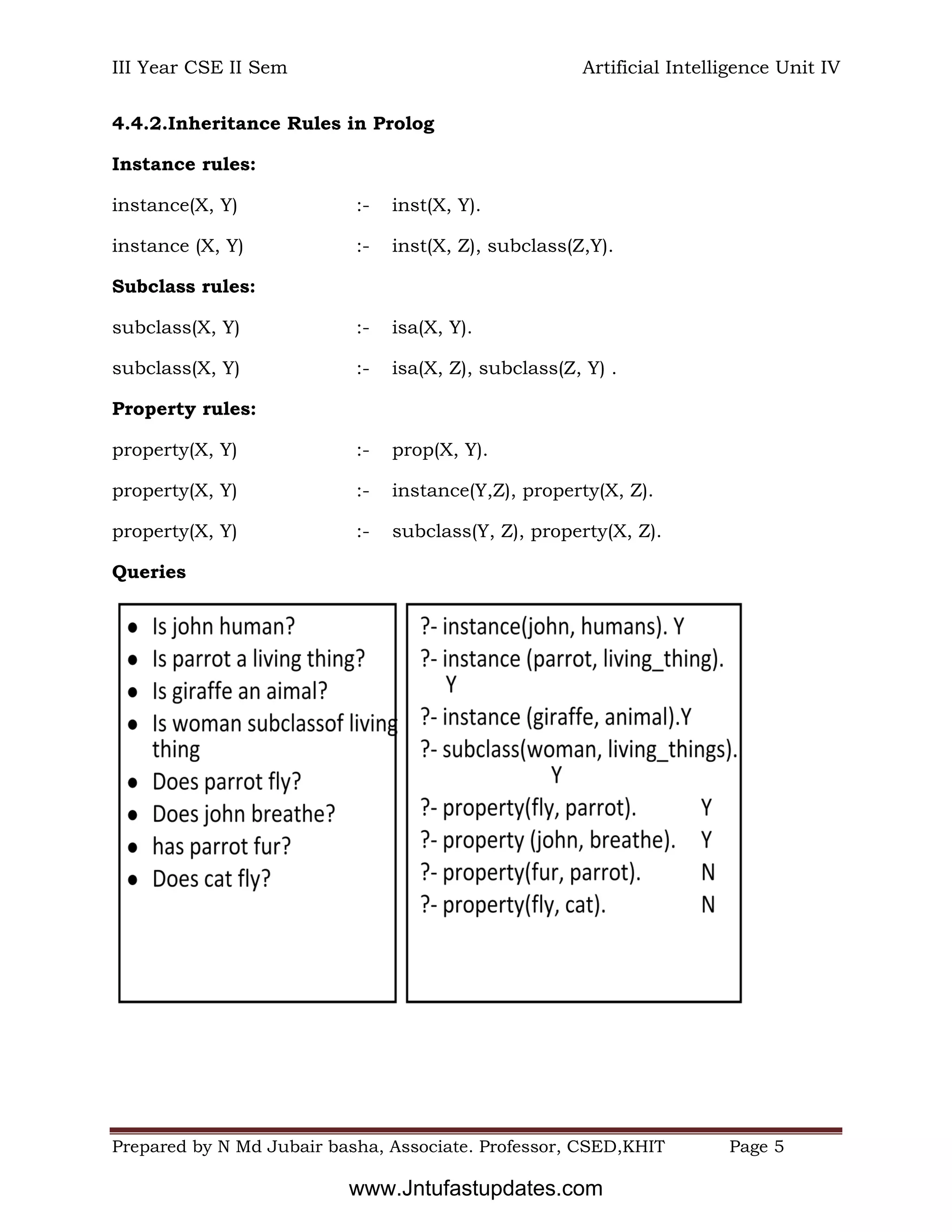


![III Year CSE II Sem Artificial Intelligence Unit IV
Prepared by N Md Jubair basha, Associate. Professor, CSED,KHIT Page 8
4.5.2.Detailed Representation of Frame Network
4.5.3.Description of Frames
● Each frame represents either a class or an instance.
● Class frame represents a general concept whereas instance frame
represents a specific occurrence of the class instance.
frame0
f_name: university
phone: (default: - 011686971)
address : (default - IIT Delhi)
frame1 frame2
f_name : department f_name : hostel
a_part_of : frame0 a_part_of : frame0
programme : [Btech, Mtech, Ph.D] room : (default - 100)
frame11 frame21
f_name: faculty f_name : nilgiri
a_part_of : frame1 is_a : frame2
age : range (25 - 60) phone : 0116862345
nationality: (default - Indian)
qual: (default - Post graduate)
frame12 frame13
f_name : science faculty f_name : renuka
ako : frame11 is_a : frame12
qual : (default - M.Sc) qual : Ph.D
age: 45
adrress: Janak Puri
www.Jntufastupdates.com](https://image.slidesharecdn.com/air16-unit-4-230914081906-023f3011/75/AI-R16-UNIT-4-pdf-8-2048.jpg)
![III Year CSE II Sem Artificial Intelligence Unit IV
Prepared by N Md Jubair basha, Associate. Professor, CSED,KHIT Page 9
● Class frame generally have default values which can be redefined at
lower levels.
● If class frame has actual value facet then decedent frames can not modify
that value.
● Value remains unchanged for subclasses and instances.
4.5.4.Inheritance in Frames
● Suppose we want to know nationality or phone of an instance-frame
frame13 of renuka.
● These informations are not given in this frame.
● Search will start from frame13 in upward direction till we get our
answer or have reached root frame.
● The frames can be easily represented in prolog by choosing predicate
name as frame with two arguments.
● First argument is the name of the frame and second argument is a list of
slot - facet pair.
4.5.5.Coding of frames in Prolog
frame(university, [phone (default, 011686971),
address (default, IIT Delhi)]).
frame(deaprtment, [a_part_of (university), programme ([Btech, Mtech, Ph.d]))]).
frame(hostel, [a_part_of (university), room(default, 100)]).
frame(faculty, [a_part_of (department), age(range,25,60), nationality(default,
indian), qual(default, postgraduate)]).
frame(nilgiri, [is_a (hostel), phone(011686234)]).
frame(science_faculty, [ako (faculty),qual(default, M.Sc.)]).
frame(renuka, [is_a (science_faculty), qual(Ph.D.), age(45), address(janakpuri)]).
4.5.6.Inheritance Program in Prolog
find(X, Y) :- frame(X, Z), search(Z, Y), !.
www.Jntufastupdates.com](https://image.slidesharecdn.com/air16-unit-4-230914081906-023f3011/75/AI-R16-UNIT-4-pdf-9-2048.jpg)
![III Year CSE II Sem Artificial Intelligence Unit IV
Prepared by N Md Jubair basha, Associate. Professor, CSED,KHIT Page 10
find(X, Y) :- frame(X, [is_a(Z),_]), find(Z, Y), !.
find(X, Y) :- frame(X, [ako(Z), _]), find(Z, Y), !.
find(X, Y) :- frame(X, [a_part_of(Z), _]), find(Z, Y).
● Predicate search will basically retrieve the list of slots-facet pair and will
try to match Y for slot.
● If match is found then its facet value is retrieved otherwise process is
continued till we reach to root frame
4.6.Extended Semantic Network
● In conventional Sem Net, clausal form of logic can not be expressed.
● Extended Semantic Network (ESNet) combines the advantages of both
logic and semantic network.
● In the ESNet, terms are represented by nodes similar to Sem Net.
● Binary predicate symbols in clausal logic are represented by labels on
arcs of ESNet.
− An atom of the form “Love(john, mary)” is an arc labeled as ‘Love’
with its two end nodes representing ‘john’ and ‘mary’.
● Conclusions and conditions in clausal form are represented by different
kinds of arcs.
− Conditions are drawn with two lines and conclusions
are drawn with one heavy line .
Example:
● Represent ‘grandfather’ definition
Gfather(X, Y) Father(X, Z), Parent(Z, Y) in ESNet.
Z
Father Parent
X Y
Gfather
www.Jntufastupdates.com](https://image.slidesharecdn.com/air16-unit-4-230914081906-023f3011/75/AI-R16-UNIT-4-pdf-10-2048.jpg)

